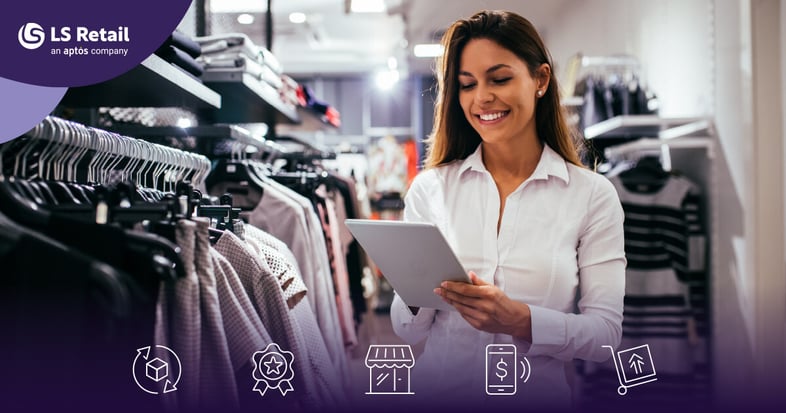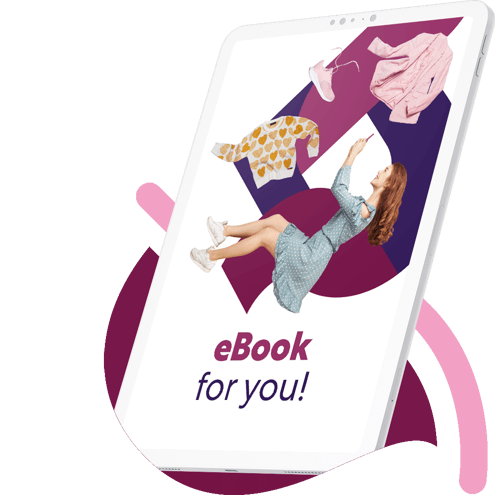
Retail success increasingly depends on a retailer’s ability to offer a complete, easy, and rewarding shopping experience, no matter if the customer wants to browse, buy, and get information online or in store. With omnichannel shoppers having a 30% higher lifetime value than those who shop using only one channel, it pays off for retailers to get the online-offline balance right.
Here are five elements you need to perfect to offer a smooth omni-channel retail experience.

1. Getting click & collect right
Click & collect (buying online and picking up in-store) is a great tactic to drive footfall into your physical store. Position your pick-up desk at the end of a route full of irresistible items that people will want to add to their cart, and you have already offset the costs of offering this service. Most importantly, consumers love click & collect. Sales made through click and collect have grown steadily since the Covid years, and they will continue to grow at a rate of 15% annually, Retail Customer Experience predicts. The main reasons? It's cheaper and faster than home delivery, and it’s quicker than having to look for products in the store.
To get it right, make sure that your website is in sync with your in-store inventory system at all times, and that the products customers can shop online are actually available. You are fulfilling orders from your store stock – you need to have a reliable retail system that offers stock transparency across eCommerce and stores to pull this off.
![]()
2. Offering inventory visibility
Many customers like to know if the product they are looking for is available in a specific store before they make the trip. Make sure you display available in-store stock on your app and eCommerce site. The more details you can offer customers, the easier you make it for them to buy. Show clearly how many items you have left in each size, color, or model, and in which store location they are. Don’t forget to include driving and walking directions to your stores, and clearly mark your opening hours. The easier you make it for customers to visit you, the more people will come to your store.
![]()
3. Setting up special offers and events that tie online and offline
Do you want online shoppers to also visit your stores, and vice versa? It’s easy to do with promotions. For example you could set up digital vouchers that can only be redeemed on the eCommerce. But don’t limit the offers to discounts or free items – think creatively. For example, if you want them to come to your stores, why not send customers vouchers that entitle them to free, limited experiences? These could be anything from a free beauty treatment or make up session, to a cake decoration course, to a seasonal pre-sale or a catwalk for loyal shoppers only.
Make sure that you collect the data of participants, including whether they are using their vouchers, how often, and how that correlates to their spending. By analyzing the success of these promotions you can gain a clearer view of how digital engagement drives your in-store revenue, and the other way around.
![]()
4. Offering everywhere returns
Customers love being able to have the flexibility to decide where to return purchases. A recent report by ZigZag Global and Shipup shows that consumers are quite split in their preferences, with half of respondents say they want multiple return options.
To offer this kind of flexibility, retailers need to be able to access the sales ledger for different stores, and for the eCommerce, centrally, and to track items and transactions across the whole chain.
![]()
5. Using customer details to offer them a better experience
eCommerce websites and apps are a goldmine of customer info: from location to demographic data to shopping history, retailers today have access to an unprecedented amount of data on their customers. Why not use this intelligence to offer a more personalized and relevant shopping experience? You could for example send notifications to your customer’s app to alert them about new products they might be interested in, or discounts for products they often buy. It pays off to make your customers feel special by showing that you know them, as multiple studies show that people spend more when they are offered relevant shopping suggestions.
Your online shop can be a great tool to drive customers to your physical stores, and vice versa. Create an integrated strategy and make sure that your customers have a great shopping experience, and make sure you are equipped with the right technology to support your ambitions and your customers’ demands. Contact us if you want to know more about LS Central.

